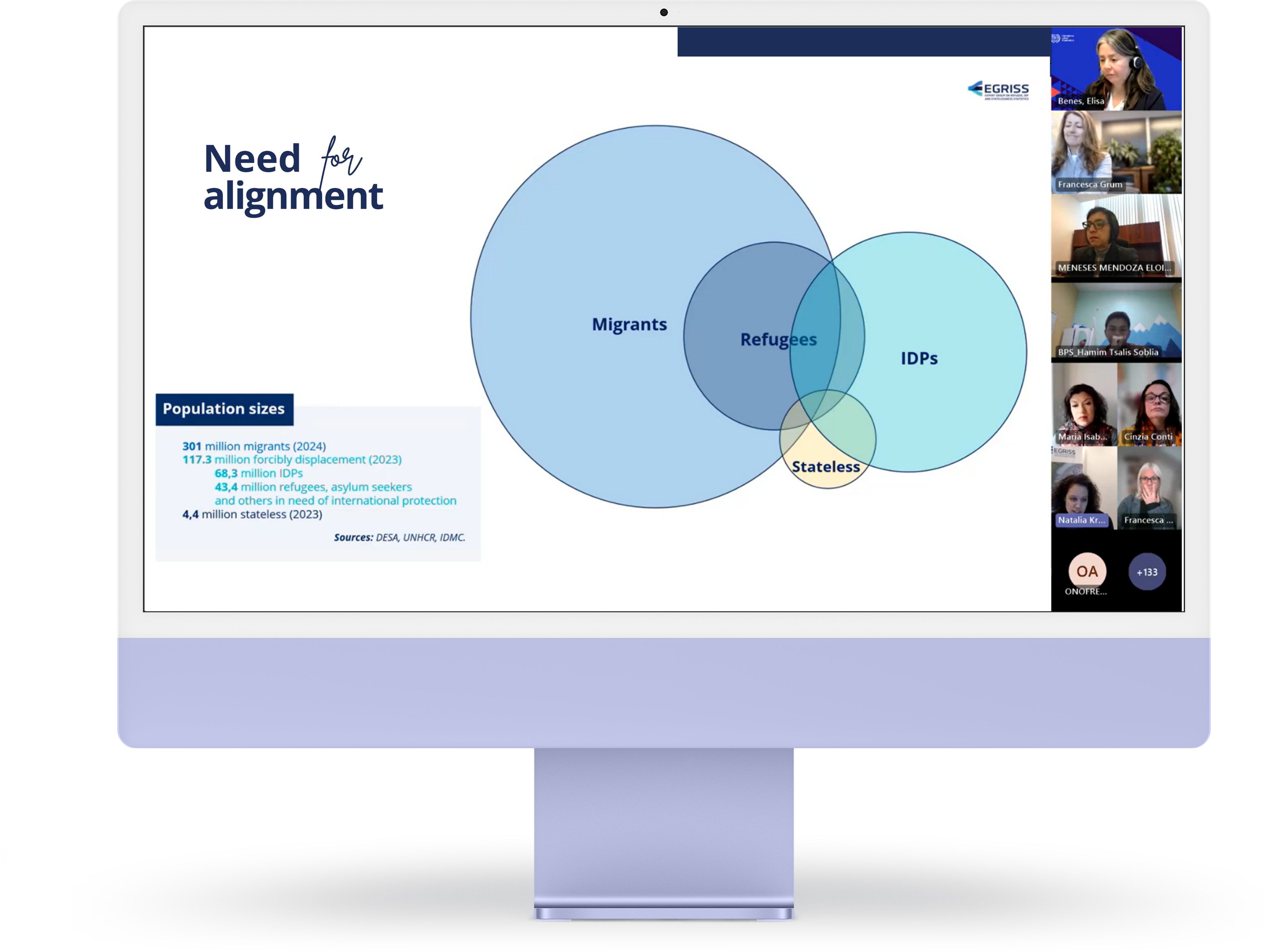13th February 2025
The Expert Group on Refugee, IDP and Statelessness Statistics (EGRISS) participated in the online event “Shaping the future of international migration and temporary mobility statistics: revised recommendations in focus” as part of the side event program of the 56th Session of the United Nations Statistical Commission (UNSC). Natalia Baal, Head of the EGRISS Secretariat, delivered an intervention describing the extent of alignment between the International Recommendations on Refugee Statistics (IRRS) and the revised Recommendations on Statistics of International Migration and Temporary Mobility, later endorsed at the UNSC. Despite significant progress, she acknowledged that further coherence is needed and identified strategic priorities to advance this.
Organised by the United Nations Statistics Division (UNSD), the International Labour Organization (ILO), and the Hungarian Central Statistical Office (HCSO), the webinar also included presentations from Maria Isabel Cobos, Chief of Social and Gender Statistics Section at the UNSD, and Elisa Benes, Head of Rights, Migration and Head of Rights, Migration and Skills Statistics Unit at ILO and co-chair of the UN Expert Group on Migration Statistics. A panel discussion with country views and strategies for implementation gathered representatives from the Hungarian Central Statistics Office, Mexico’s’ National Institute of Statistics and Geography, the Italian National Institute of Statistics (the three EGRISS members) and Statistics Indonesia.
Speaking on the need for alignment between statistical frameworks, Natalia noted that refugees, internally displaced persons, and stateless populations often overlap with international migrant populations. As she congratulated the work done in the revision of the Recommendations, the clearer distinction between international migration and temporary mobility, clarifying where refugees fit within these categorizations. Yet, important nuances remain unclear—particularly regarding populations whose status may change without meeting length-of-stay criteria. Moreover, gaps remain when considering population mobility more widely.
Areas of harmonisation also include statistical indicators prioritised across both sets of Recommendations, technical approaches to data collection using both traditional and non-traditional sources, and operational coordination at national, regional, and international level beyond normative guidance. Natalia welcomed increasingly inclusive terms of reference and membership in migration statistics coordination platforms, bringing together experts working on both migration and forced displacement statistics. For instance, the CEPAL Working Group on Migration and Displacement Statistics (2024-2025) and the expected merge of existing UNECE groups into single Group of Experts on Population and Migration Statistics (including forced displacement)
Natalia identified a pressing need to “clearly and concisely communicate this alignment to countries and other stakeholders” and foregrounded the importance of developing more accessible guidance materials that effectively describe alignment and gaps. Similarly, she suggested strengthening collaborative implementation building upon existing cooperation at regional and national levels with enhanced global support. Recognising that statistical frameworks require continuous evolution, the head of the EGRISS Secretariat highlighted the need for ongoing conversation and future updates.
Watch the session:
Resources

